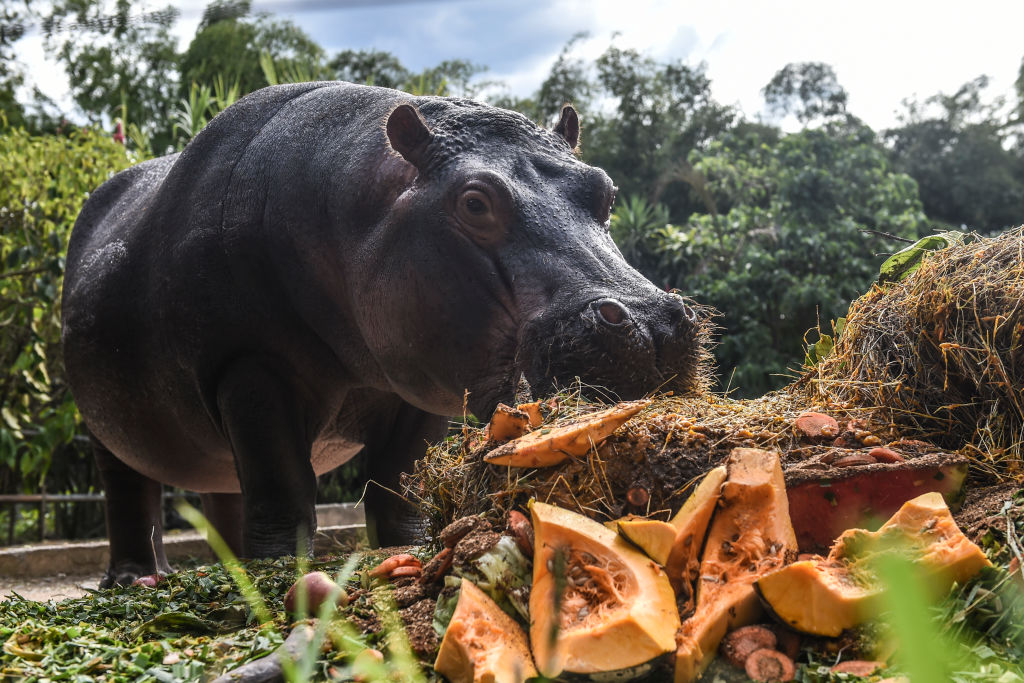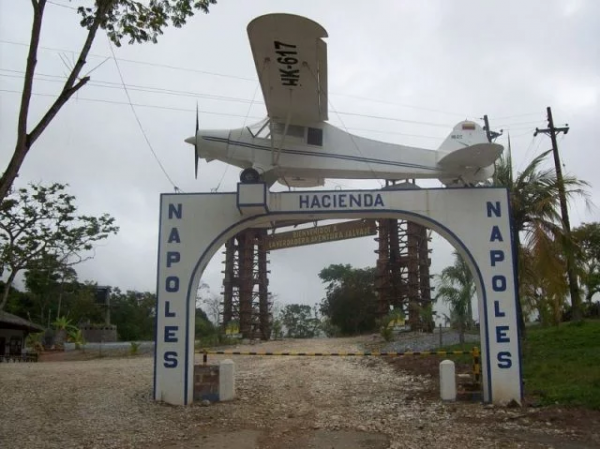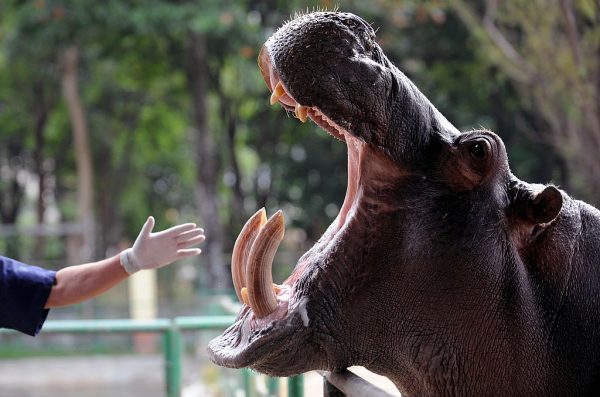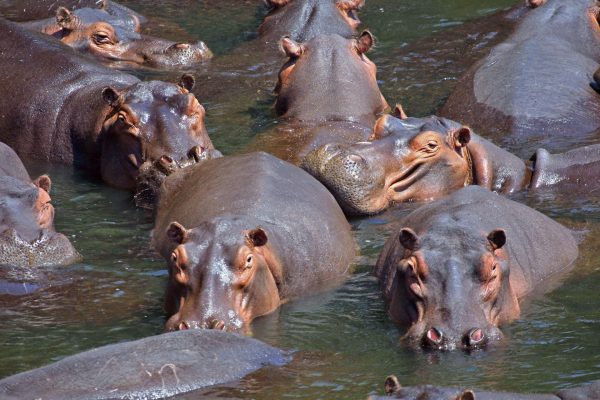Pablo Escobar, His Hippos Won’t Stop Pooing All Over Colombia

Pablo Escobar did a lot of damage when he ruled a drug cartel in Colombia in the 1970s, 1980s, and into the early 1990s.
When police finally killed him on a rooftop in 1993 as he was trying to evade arrest, he left behind an enormous trove of ill-gotten assets, including a massive estate, a series of statues he kept in his garden, a collection of luxury vehicles, and a personal zoo filled with exotic animals.
All those assets were seized, of course, and the police either sold or liquidated them, while the creatures in the zoo were shipped off to more appropriate locales.

All except one breed; the hippopotamuses were allowed to remain at the lake at Hacienda Napoles, the Escobar estate that became a theme park in 2007.
There were only four, and officials thought — naively, it seems in retrospect — that they couldn’t do much damage if left on their own.
Apparently, the authorities did not count on two things: the voracious sexual appetite of hippos, and the danger posed by the chemicals in their excrement. A hippo’s poop, it appears, is pretty potent stuff.
The four hippos soon became a herd of 28, then 40 by 2016, according to an article in National Geographic at the time. They eat grasses and other vegetation all day, and at night go into water to cool down and — unfortunately — relieve themselves.
“A hippo went into a lake to have a poop” may sound like the start of a bad joke, but the deleterious effects on Columbia’s waterways is no laughing matter.
The hippos — originally three males and one female — were cared for by the government at the estate, and locals visited them as part of the tourist attraction.

But soon after it opened to the public, some hippos left the compound and began migrating through the Magdalena River.
The 40 counted in 2016 has mushroomed into nearly 90, as the hippos continue to roam the countryside, visit towns and by night inhabit lakes where they leave their excrement and damage the delicate ecosystem.
Hippos have no enemies in their Columbian paradise, so their numbers just keep increasing, in spite of some measures initiated by government to cull the herds.
Officials even tried rounding up some of the males and castrating them, but that effort was — they admit — a dismal failure.
For the last two years, scientists have been studying the hippos and trying to come up with ways to contain the problem and deal with the damage they do to the lakes and rivers.
One of those scientists was Jonathan Shurin, a professor of biological sciences at the University of California’s San Diego campus.
In a statement, he and other team members referred to the hippos’ growth rate as “skyward,” and said, “in the next couple of decades, there could be thousands (of them).”
Because they have no natural enemies, as they do in their native Africa, hippos in Colombia have achieved “top of the food chain” status, and officials seem unsure of how to proceed.

Their excrement alters the oxygen levels in lakes, and boosts the growth of bacteria and harmful algae that cause people who rely on the water to get sick, experts say.
In 2016, Columbian biologist David Echeverri told National Geographic that they are “dangerous and territorial,” and that it’s only a matter of time before a human-hippo encounter ends in tragedy.
In Africa, hippos are responsible for more human deaths than any other large animal, contrary to popular imagination that gives that label to, perhaps, lions, or even elephants.
So, what will authorities do? Relocating the hippos, or sterilizing them are two expensive propositions, but the Columbian government may have to pony up the money if it wants to curb the problem.
Whether they implement one, or both of those solutions remains to be seen; in the meantime, the hippos wander everywhere, doing harm in their unfettered freedom.
Animal Avengers Create A 3D Printed Shell to Save a Burnt Tortoise
It sounds a little reminiscent of Escobar himself, although in fairness to the hippos, they have no idea about the havoc they’re wreaking.
